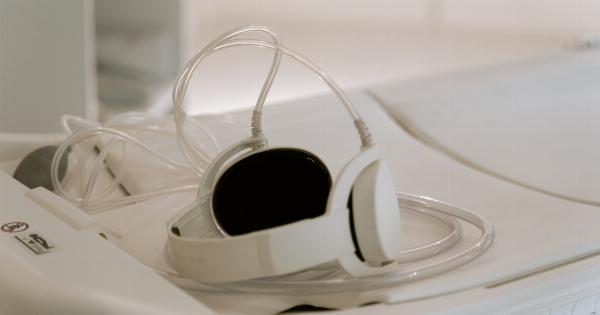Semi-permanent nail polish, also known as gel polish or soak-off gel, has gained popularity among women in recent years due to its long-lasting and durable nature.
Unlike traditional nail polish, which chips easily and requires frequent touch-ups, semi-permanent nail polish can last up to two weeks without cracking or peeling.
However, with its advantages come concerns about the safety of using semi-permanent nail polish. Many women wonder if the convenience and beauty benefits are worth the potential risks.
In this article, we will explore the safety concerns surrounding semi-permanent nail polish and provide valuable information to help you make an informed decision.
1. Chemical Composition
Semi-permanent nail polish typically contains a combination of monomers, oligomers, and photo-initiators. These ingredients are responsible for the gel polish’s durability and ability to cure under UV or LED lamps.
However, some of these chemicals may have potential health risks.
One commonly used ingredient, methacrylate monomers, can cause skin irritations and allergies.
Research suggests that prolonged contact with methacrylate monomers may lead to allergic contact dermatitis, a condition characterized by redness, swelling, itching, and blisters around the nail area.
To minimize the risk of developing an allergic reaction, it is essential to ensure that the salon or brand you choose uses high-quality products that conform to safety standards and do not contain harmful ingredients.
2. UV/LED Lamp Exposure
To cure the gel polish, a UV or LED lamp is required. During this process, the nail plate is exposed to varying degrees of UVA radiation, which raises concerns about the potential long-term effects of repeated exposure.
UVA radiation can penetrate the skin more deeply than UVB rays, reaching the dermis, the inner layer of the skin. Prolonged exposure to UVA radiation can lead to premature aging, skin damage, and an increased risk of skin cancer.
However, the risk from the typical duration of UV lamp exposure in nail salons is considered low.
Nonetheless, taking precautions such as applying sunscreen or wearing protective gloves that leave only the fingernails exposed can help reduce any potential risks associated with UV/LED lamps.
3. Nail Damage and Weakness
While semi-permanent nail polish provides a long-lasting and chip-free manicure, it can also cause damage and weakness to the natural nail underneath.
For gel polish to adhere properly, the top layer of the nail plate must be filed or buffed, creating a rougher surface that allows better adhesion. However, excessive or incorrect filing can weaken the nail, making it prone to breakage and thinning.
Moreover, improper removal techniques or peeling off the gel polish can also lead to nail damage. If the polish is not soaked off correctly or if force is applied to remove it, the nail may become thin, brittle, or develop white spots.
4. Potential Allergic Reactions
Although allergic reactions to semi-permanent nail polish are rare, they can occur. Sensitization to the chemicals present in gel polish can happen after repeated exposure, leading to an allergy.
Symptoms may include redness, itching, swelling, and the development of rashes or hives around the nail area.
If you experience any of these symptoms, it is crucial to remove the gel polish immediately and consult a dermatologist or a healthcare professional for further advice.
5. Ethical and Sustainability Concerns
Aside from safety concerns, it is also important to consider the ethical and sustainability aspects of semi-permanent nail polish. Some gel polishes may contain ingredients that are harmful to the environment or have been tested on animals.
Choosing brands that prioritize sustainability by using eco-friendly formulas or adhere to cruelty-free practices can help reduce our ecological footprint and promote the well-being of animals.
6. Salon Hygiene
The safety of semi-permanent nail polish application also depends on the hygiene practices of the nail salon you visit. Poor sanitation and inadequate disinfection of tools can increase the risk of infections.
Ensure that the salon follows proper sterilization protocols for their tools and that their staff maintains good hand hygiene. Don’t hesitate to ask questions about their cleaning practices to ensure your safety.
7. Considerations for Pregnant Women
Pregnant women should exercise caution when using semi-permanent nail polish. Some ingredients found in gel polish, such as formaldehyde and toluene, have been associated with potential risks to fetal development.
While more research is needed to confirm the effects of these chemicals on pregnancy, it may be wise to minimize their exposure, especially during the first trimester when the baby’s organs are rapidly developing.
8. Alternative Nail Care Options
If the safety concerns surrounding semi-permanent nail polish are too worrisome, there are alternative nail care options to consider:.
– Traditional Nail Polish: Standard nail polish offers a wide range of colors and finishes. Although it may not last as long as gel polish, frequent touch-ups provide more flexibility and minimize any potential risks.
– Water-Based Nail Polish: Water-based nail polish brands offer safer alternatives with fewer harmful chemicals. These polishes are free from formaldehyde, toluene, phthalates, and other potentially harmful substances.
– Nail Wraps: Nail wraps or stickers are another option for those seeking a long-lasting and chip-free manicure.
Made from thin layers of adhesive film, nail wraps come in various designs and are easy to apply and remove without damaging the natural nail.
9. Precautions and Self-Care
To mitigate potential risks when using semi-permanent nail polish, you can take several precautions and practice good nail care:.
– Choose reputable nail salons that prioritize hygiene and use high-quality, reputable gel polish brands.
– Follow the manufacturer’s instructions carefully and avoid overexposure to UV/LED lamps.
– If you notice any signs of an allergic reaction or nail damage, remove the gel polish immediately and consult a healthcare professional.
– Limit the use of semi-permanent nail polish and give your nails regular breaks to recover and breathe.
10. Conclusion
Semi-permanent nail polish offers numerous benefits in terms of durability and long-lasting manicures. However, it is essential to be aware of the potential safety concerns associated with its use.
By understanding these concerns and taking necessary precautions, you can enjoy the convenience and beauty of gel polish while safeguarding your nail health.































